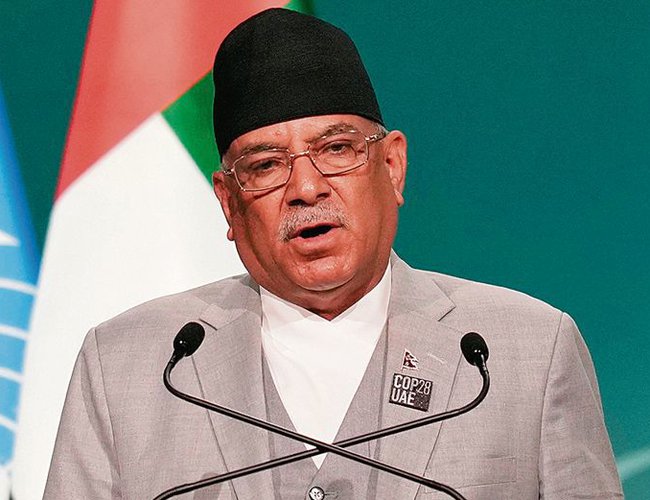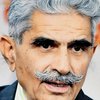
NEPAL’s unpredictable politics has turned into a game of musical chairs. Last week, a third coalition government was cobbled together, led by PM Pushpa Kamal Dahal Prachanda, after he became PM on December 25, 2022. It signified the resurgence of the Left alliance that was first minted with Chinese assistance as the short-lived Nepal Communist Party (NCP) in 2017. Symbolically, it represented the reunion of five Left Prime Ministers of Nepal — KP Oli, Prachanda, Baburam Bhattarai, Madhav Nepal and Jhala Nath Khanal. Now, all but Bhattarai appear to be together. The Chinese Embassy in Kathmandu is jubilant. A Chinese Communist Party delegation arrived on Sunday to congratulate the government. Oli’s Communist Party of Nepal (Unified Marxist–Leninist), having 78 seats, is happy to return to power; the other parties include the CPN-Maoist (32), the CPN-Unified Socialist (10), the Rashtriya Swatantra Party (20) and the Janata Samajwadi Party (14). The Loktantrik Samajwadi (four seats) and other smaller parties are bargaining the terms of joining the coalition.
A 22-member council of ministers, with four deputy prime ministers, has been installed, with the Maoists keeping the finance portfolio and RSP’s Rabi Lamichhane returning as home minister. Should the other parties join the coalition, the Left alliance could have an unassailable majority. According to Nepal’s new constitution, 165 seats are directly contested and 110 MPs come from proportional representation, ensuring that no single party can form the government. That’s how Prachanda, as the leader of the third largest party, is the kingmaker and the ‘lead PM’ in a power-sharing arrangement that has become the staple for governance.
The Nepali Congress (NC), the single largest party with 89 seats, is furious with Prachanda’s betrayal, though it is responsible for that. Suddenly, it has gone into political oblivion and will lose many of the 29 provincial ministers, four out of seven chief ministers and all 10 central ministers. The hara-kiri is caused by the endemic factionalism, a lack of vision and policy and an impatient and anxious younger leadership wanting to go it alone. In the 2022 elections, the pre-poll alliance with Maoists did not prove fruitful; the party has been critical of the Maoists and lately undercut its interests in provinces and at the Centre. Prachanda declared that the alliance with the NC had not been rewarding and jumped ship to join hands with arch-enemy Oli, who, in turn, befriended near-enemy Madhav Nepal. The country’s domestic politics embodies Lord Palmerston’s adage: “We have no eternal allies, and we have no perpetual enemies. Our interests are eternal and perpetual.” The NC also attempted horse-trading and tried to stitch up a coalition. But, as before, it was late off the mark.
It is worth recalling the birth of the Left alliance in 2017; pictures of five former PMs were splashed on the front pages of newspapers. It was engineered by then Chinese Ambassador Yu Hong and Left leaders. Equally interesting is the fact that Indian agencies, which are perpetually accused of micro-managing and interference, were also stumped. What followed was three years of political instability as Oli did not honour the power-sharing arrangement with Prachanda.
China has made no secret of its intent to recreate the Left alliance. Prachanda, though, has steered the ship deftly, balancing China with India. Nepal has been unhappy with China over the Belt and Road Initiative, especially after Beijing failed to implement any of the projects signed seven years ago. Since then, China has been working for the return of the NCP. Meanwhile, senior visiting Chinese leaders, including Vice-Minister Sun Haiyan of the International Liaison Department of the Chinese Communist Party, have noted that China and Nepal have very good relations, but some countries (alluding to India) are not happy about it. Earlier, Chinese Ambassador Chen Song had expressed similar sentiments, and Kathmandu’s Foreign Office had issued a rare rebuke.
Many Nepalese are not happy with China, especially its ‘wolf warrior’ diplomacy and bullying over the ‘One China’ policy and Tibet policy. Corruption by Chinese companies in the construction of Pokhara International Airport and alleged Chinese encroachment along the northern borders led to protests last month in Kathmandu. Some Chinese nationals are accused in the gold smuggling case in Kathmandu. Chinese projects are white elephants, just like the Chinese-constructed Matale airport and Hambantota sea port in Sri Lanka, which were guaranteed to lead to a debt trap.
India is on the right track in Nepal, focusing on development, connectivity and hydel projects. India built a petroleum pipeline from Motihari in Bihar to Amlekhgunj in Nepal. New Delhi provides gas and fuel to Nepal. The aberrations of the economic blockade of 2015 are fading and Indians are no longer the proverbial demons. The preliminary report on India’s rail project to Kathmandu was submitted to Nepal two years ago; only the method of funding remains to be resolved as Kathmandu wants the Indian grant. The Chinese rail project from Kirung to Kathmandu has become a chimera, like the sundry trade and transit projects signed by the Oli government in 2016. India’s great cooperation with Nepal is in the hydropower sector. Soon, Nepal will be self-sufficient in electricity and is already selling power to India. During Prachanda’s visit to Delhi last June, it was agreed that Nepal will be able to sell us 10,000 MW in the next 10 years. This will help reduce its trade deficit.
Prachanda has strived for Nepal to become a bridge between two major economies. It is early days for the new coalition; last year, Prachanda had joined the Nepali Congress-majority Democratic Alliance. There is no clarity on the new power-sharing arrangement between Prachanda and Oli. He can still do to Oli what the latter did to him in 2018. In the neighbourhood’s great game, after the Maldives and Nepal, it is advantage China. The Triibune

Ashok K Mehta
He is a retired Major General of the Indian Army
- Nepal: PM Prachanda On A Slippery Wicket As Newly-formed Left Alliance’s Future Remains Uncertain
- Mar 22, 2024
- Prachanda Is The Right Choice For India In Nepal
- Feb 26, 2024
- Agnipath Scheme May Impact Ties With Nepal
- Aug 27, 2022
- CDS BIPIN RAWAT: A Proud Gorkha
- Dec 09, 2021












